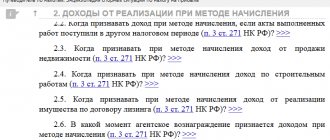Normative base
Order of the Ministry of Health and Social Development of Russia dated 05/02/2012 N 441n “On approval of the Procedure for issuing certificates and medical reports by medical organizations”
Resolution of the State Committee for Labor of the USSR, the Secretariat of the All-Union Central Council of Trade Unions, the Ministry of Health of the USSR dated 12/31/1987 N 794/33-82 “On approval of the Basic Provisions on the rotational method of organizing work »
Decree of the Government of the Russian Federation dated 03.02.2005 N 51 “On the amount and procedure for paying bonuses for shift work to employees of federal government bodies and federal government institutions”
What is a watch and where is it used?
The shift method of work according to the Labor Code is regulated by Chapter 47. In general, the Labor Code of the Russian Federation understands the shift method (the shift itself) as the sum of the time of work and the rest interval between shifts.
Work on a rotational basis () is limited in duration to a period of a month. Exceptions include special cases at individual sites, due to which the specified period may be extended to 3 months (for this, the opinion of the workers’ trade union body, if there is one, must be taken into account). In its absence, they act within the framework of Art. 74 TK
The shift method of the Labor Code of the Russian Federation provides a guarantee of providing workers with housing when they are at the work site (Article 297).
The designated type of activity is used in oil and gas and coal mining, development of precious metals, fishing, logging, as well as in the field of transport, construction, geology and others.
How to properly create a schedule for shift workers?
The Labor Code of the Russian Federation provides ample opportunities for organizing an optimal operating mode. Based on the specifics of the activity, industry, geography, HR specialists can use flexible modes, shift schedules, etc. The rotation method, which is used for technological, climatic and other reasons, is essentially also one of the working modes. But with its organization and control, everything is a little more complicated. Let's evaluate how to create such a schedule.
The Labor Code of the Russian Federation provides ample opportunities for organizing an optimal operating mode. Based on the specifics of the activity, industry, geography, HR specialists can use flexible modes, shift schedules, etc. The rotation method, which is used for technological, climatic and other reasons, is essentially also one of the working modes. But with its organization and control, everything is a little more complicated. Let's evaluate how to create such a schedule.
The shift work schedule, like a shift schedule, must be drawn up for the entire accounting period of time. Most often, six months or a year are taken into account to summarize the work. This rule is explained by Art. 301 of the Labor Code of the Russian Federation. In accordance with it, the time of work and rest in the accounting period is determined by the shift work schedule. This norm of the Code fixes the first 2 rules of the shift: the schedule must be established taking into account the opinion of the trade union (if there is one), the work schedule must be communicated to employees 2 months before its implementation. New employees are familiarized with the schedule when they are hired.
The law does not provide any requirements or forms for the preparation of this document. However, it must contain basic technical parameters: the accounting period for such a schedule. It is also a good idea to determine the duration, beginning and end of the shift, the interval between shifts, breaks and rest time, conditions and payment procedures, etc.
By the way, in the minds of many, a shift is perceived as work in the Far North and harsh climatic conditions. This means that additional payments, allowances and compensation are applied there. Moreover, other personnel procedures also have their own nuances - granting leave, terminating an employment contract, etc. But a rotational work method is possible in any region of the country, for example, at large construction sites in the south of Russia, in Moscow, etc. Naturally, increased compensation does not apply in this case.
In addition, when creating a schedule, you need to remember a number of other conditions. For example, for shift work, you cannot plan a schedule outside of established working hours and days off. That is, overtime and irregular work cannot be included). Another nuance is that you can plan to work at night only if such a possibility is agreed upon in the contract with the employee. In this case, night work is equalized with the duration of day work, it is not reduced, and the standard hours are not reduced. Also, the length of the pre-holiday working day is not reduced, and overtime can be compensated for by additional rest or pay, as for overtime work. Naturally, in the rotation schedule it is necessary to plan weekly uninterrupted rest, in accordance with the norms of the Labor Code of the Russian Federation. Finally, the most important thing: the duration of the shift should not exceed one month, and the duration of the daily shift should not exceed 12 hours.
But the most difficult thing for HR is related to something else. What if one of the employees did not arrive on duty at the allotted time, for example, he quit or got sick? In this case, the company can attract workers beyond the duration of the shift, until the new shift arrives. But in such a situation, the employer is obliged to take all measures to organize her arrival as quickly as possible. By the way, this requirement is also based on the Resolution of the State Committee for Labor of the USSR, the Secretariat of the All-Union Central Council of Trade Unions, the Ministry of Health of the USSR dated December 31, 1987 N 794/33-82 “On approval of the Basic Provisions on the shift method of organizing work.”
At the same time, we must not forget about Part 6 of Art. 99 Labor Code of the Russian Federation. She reminds that overtime work should not exceed 4 hours for an employee over two consecutive days and 120 hours per year. In other words, you will have to urgently, but for a very short period of time, staff the shift with other workers, and very quickly look for a full-fledged replacement. The pandemic also made its contribution. Thus, until the end of 2022, the Temporary rules for working on a rotational basis, approved by Decree of the Government of the Russian Federation of April 28, 2020 No. 601, are in force. They clarify that if shift workers cannot arrive on time precisely because of measures to prevent coronavirus, changes in the duration of the shift, the accounting period and the work schedule on the shift are allowed. But this is only possible with the consent of the employees. If the change in the shift schedule is “not connected” with the virus, this requires organizational or technical changes in labor, as stated in Art. 74 Labor Code of the Russian Federation.
One way or another, the shift schedule, despite its apparent flexibility, is a very strict procedure. Its severity not only means that the employee is obliged to comply with established rules and schedules. The employer is very limited in its actions, which often require coordination with each employee working on shift. Emergency unilateral measures are fraught with regime failure, conflicts with employees and violations of the Labor Code of the Russian Federation. The risk of huge fines can only be reduced by clear and correct documentation.
Who can work a shift
Work on a rotational basis according to the Labor Code of the Russian Federation (based on Article 298) is available to the following persons:
- adults;
- non-pregnant and without children under three years of age (female criterion);
- for fathers or guardians of children under three years of age, if they are not raising them alone;
- without medical contraindications, according to the conclusion issued in the manner prescribed in Order of the Ministry of Health and Social Development of Russia dated May 2, 2012 No. 441n.
What is a watch for?
The Labor Code reserves the shift method of work for cases where the place of work or the employer is located at a significant distance from the permanent residence of employees and it is necessary to carry out production processes or activities listed above. The shift is also suitable for cases when it is necessary to quickly build, re-arrange or repair objects with social, production or other tasks in areas that are remote, uninhabited or in conditions of a specific nature.
Holiday rules
The Labor Code regulates vacation in the usual manner only after the days of rest between shifts have been used. The employee is guaranteed to receive 28 calendar days - the main rest. Additional days are provided for work:
- in the Far North - 24 calendar days;
- in territories equated to the Far North - 16 calendar days;
- in the south of Eastern Siberia and the Far East - 8 calendar days.
The length of service, which allows for additional rest, includes both days of shift and actual days on the road, determined by the schedule.
How to introduce a shift at an enterprise
The rotation method, namely the system of its application, is introduced by the employer. Before making an appropriate decision, a draft local regulatory act plus justifications for it are submitted to the elected body of the primary trade union organization that defends the interests of workers (all or the majority).
This body, a maximum of five working days after receiving the project, sends the employer its written reasoned opinion on it. When it is negative or includes proposals to improve the project, the employer has two options:
- Agree with this opinion.
- It is mandatory to reach a consensus through additional consultations (within three days) after receiving an opinion.
The employer can approve the appropriate act without the consent of the elected body. Contradictions are reflected in the protocol, after which the act becomes valid. The elected body of workers may appeal against an act introduced in this way in the relevant state labor inspectorate or in a court of general jurisdiction. The said body has the right to initiate a collective labor dispute in accordance with Chapter 61 of the Labor Code. But that's if it exists. If there is no trade union, the employer introduces new working conditions in compliance with the procedure prescribed in Art. 74 Labor Code of the Russian Federation.
Transferring already working frames to this mode occurs through the following sequence of steps:
- Written notice of transfer to rotational work with a note of consent to such work (two months before the transfer). If someone does not agree to the transfer, they are offered any vacancy. In the absence of such or the person’s refusal of the proposals, the employment contract is terminated.
- Changing the employment contract through the approval of an additional agreement.
- Registration of a transfer order.
Sample order to start a shift
Work and rest schedule during shift work
The shift work schedule of the Labor Code of the Russian Federation is stipulated in Art. 301, as well as in section 4 of the Resolution of the State Committee for Labor of the USSR, the Secretariat of the All-Union Central Council of Trade Unions, the Ministry of Health of the USSR dated December 31, 1987 No. 794/33-82.
The shift method according to the Labor Code of the Russian Federation is implemented with summarized accounting (Article 104 of the Labor Code) of working time for a month, a quarter, a longer period, or a maximum of a year.
The working shift schedule fixes the duration of work and rest for the accounting period (applies to all working time, as well as travel time from the assembly point or place where the employer is located to the place of work). This schedule is entered by the employer in the same mode as the shift itself. Employees are notified of this innovation at least two months before it takes effect.
The schedule takes into account the time required to transport workers to and from their shifts. But the days of travel to and from work may affect inter-shift rest, since they are excluded from labor time.
Scheduled overtime hours, when they are not a multiple of a full workday, can be accumulated and combined into full working days, which entails the provision of additional days of inter-shift rest.
The maximum duration of a daily work shift is 12 hours. Workers' rest between shifts, including lunch breaks, can also last half a day. The time of daily (between shifts) rest, which is underused in this case, and the days of weekly rest are summed up and provided as additional days off from work (inter-shift rest time) in the accounting period. Weekly rest, which can affect any days of the week according to the number of days in the current month, must be minimally equal to the number of full weeks of this month.
Sample shift work schedule
Documentary reflection of the working hours of the shift
The employer must accurately record the time worked by the employee on shift - for each month and for the accounting period as a whole (Part 3 of Article 300 of the Labor Code of the Russian Federation). To do this, use a working time sheet - in a form developed by the employer, or using forms No. T-12 or T-13 (approved by Resolution of the State Statistics Committee of Russia dated January 5, 2004 No. 1).
As a result, this document should reflect:
- days and times of performance of official functions;
- weekend;
- periods of inter-shift rest;
- periods of travel.
The company develops the symbols for indicating each of the specified types of time in the timesheet independently and enshrines this in local regulations. To do this, you can combine codes for designating types of working time with a symbol for working time on a shift for form No. T-12 - “VM”:
- I/VM – operating time;
- N/VM – hours paid as night shifts;
- RW/VM - work on a day off by order or on a holiday according to a schedule, paid in an increased amount;
- S/VM – overtime work outside the schedule by order, paid at an increased rate.
For non-working hours, the company needs to develop independent designations, since the standard timesheet forms provide a designation only for weekends - “B”. As an example, you can use the symbol:
- “MV” – for inter-shift rest;
- “VP” is for travel time.
We also recommend keeping individual time cards for each shift worker. They group and summarize data monthly and for the accounting period according to the following indicators:
- standard time;
- duration of work in hours;
- the number of rest days between shifts, provided for by the schedules;
- travel time in days;
- actual number of rest days provided between shifts.
How is such work paid?
Payment for work on a rotational basis is noted in Art. 302. Any calendar day of being at work during the rotation period, as well as the actual days of travel from the place where the employer is located (collection point) to the place where work tasks are performed and back, is paid with an allowance that replaces the daily allowance. Its amount and payment procedure depend on what kind of organization the employer is. If this is a federal public sector employee, then the corresponding parameters of the allowance are determined by Decree of the Government of the Russian Federation dated 02/03/2005 No. 51 or similar standards of a specific subject of the Russian Federation, a municipality, if this is a public sector employee of the appropriate level.
For other companies, the bonus is specified in labor, collective agreements or local regulations.
For each travel day to and from the workplace, for days of travel delay due to weather or due to the fault of the carrier, the employee receives a daily rate. He receives it for any overworked day of rest according to the schedule (day of inter-shift rest). Labor, collective agreements, local regulations may determine higher pay.
Shift workers from other regions who work in the Far North and similar areas are given a regional coefficient and are paid percentage bonuses to their salaries in the manner and amount that are provided for persons who continuously work in such places.
EXAMPLE No. 2
Let's use the conditions of example No. 1.
The drilling rig operator on shift works:
4 weeks x 10 hours x 6 days = 240 hours.
The normal working week is 40 hours:
4 weeks x 40 hours = 160 hours.
That is, the employee’s overtime is:
240 hours – 160 hours = 80 hours.
The overtime itself is not subject to payment; for it, the shift worker is provided with inter-shift rest (Article 301 of the Labor Code of the Russian Federation, Determination of the Constitutional Court of the Russian Federation dated September 29, 2015 No. 1883-O). Each day of rest in connection with overworking hours within the work schedule on a shift (that is, a day of inter-shift rest) is paid in the amount of the daily tariff rate, daily rate (part of the salary (official salary) for the day of work), unless a higher payment is established by the collective an agreement, a local regulatory act or an employment contract (Part 3 of Article 301 of the Labor Code of the Russian Federation).
We convert the employee's overtime hours into days:
80 hours: 8 hours = 10 days.
In practice, it happens that the number of processing days turns out to be fractional.
Work on a rotational basis - registration according to the Labor Code of the Russian Federation
Shift workers are registered for work through a corresponding employment contract, which structurally displays the following information:
- Employee and employer data.
- General provisions.
- Terms of payment.
- Temporary mode of work and rest.
- Working conditions plus guarantees and compensation.
- Compulsory insurance (social, pension, medical).
- Rights and obligations of the employee and employer.
- Their responsibility.
- Training in safe working methods.
- Final provisions.
- Details and signatures of the employee and employer.






